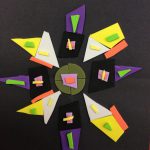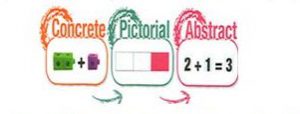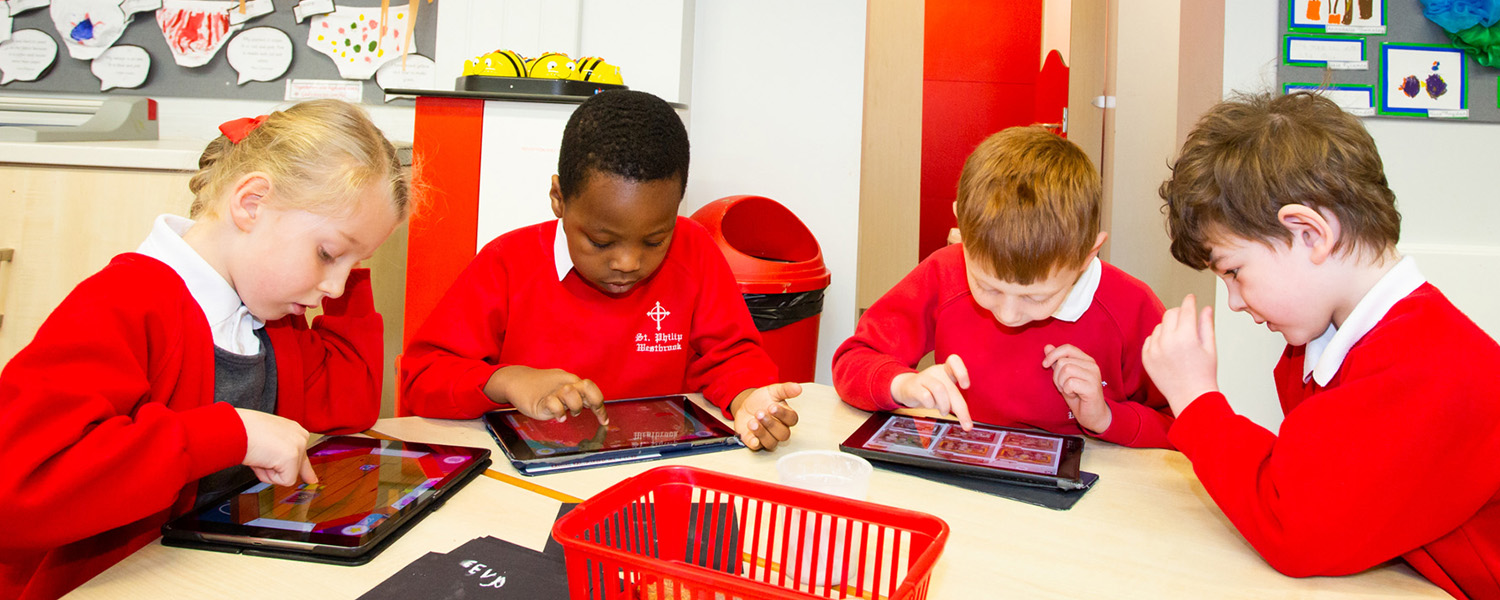
The Mathematics Curriculum
Please find details for each year group in our milestones.
How Maths is Organised in School
All cohorts follow the National Curriculum for maths Age Related Expectations (ARE) based around the aims of fluency, mathematical reasoning and problem solving. The National Curriculum places higher expectations on pupils and teachers. It requires teaching to mastery. St Philip’s Primary School use the White Rose scheme in EYFS and the Maths No Problem scheme from Y1-6, adopting a Singapore approach to teaching mathematics which ensures deep learning and mastery throughout. In all key stages, pupils who grasp concepts rapidly are challenged through rich and sophisticated problems before any acceleration through new content and those who are less secure are supported to consolidate their understanding before moving on. Prior learning is revisited regularly through starter activities (known as ‘Know More Remember More’ tasks) and morning activities.
A Typical Maths No Problem Lesson
Our children’s curiosity is ignited through exploration of a problem that is easy to enter but difficult to leave. Deep learning takes place through challenge, consolidations with the use of variance of context. Children make links and connections using a blend of practical apparatus, moving from using concrete resources to visual representations (picture form) and then progressing to the abstract form.

Every Lesson Includes:
- Connections: Explicit links are made, explained and articulated to ensure that prior learning is built upon and guided from the very start of the lesson.
- Explore: A rich and sophisticated problem that is explored by using concrete resources. Working in groups, children identify methods to tackle the problem which are then recorded in the child’s journal. Journaling allows the opportunity for children to record their chosen methods, deepen their explanation skills and challenge themselves by thinking of the most efficient method and other possibilities.
- Master: This allows the teacher to model and explain key methods for solving the problem. Reciprocal and choral reading methods are used.
- Activity Time (not all lessons): Provides children with opportunity to work in small groups to explore the mathematical concepts through investigations.
- Guided Practice: This part of the lesson allows the teacher to scaffold the children’s learning which then supports all learners ready for independent work.
- Independent workbooks: Children apply the skills that have been taught independently in their workbook.
- Challenge / Support: Some children may progress through their independent activity quicker than others; therefore, challenges are set to extend their thinking further. Challenges extend the child’s thinking by applying their knowledge creatively to word problems, writing explanations, thinking of their own problems, thinking of other possibilities and combinations of methods and number facts. Other children may require additional support during lessons, this is provided by a teacher or teaching assistant, through the use of practical resources or through sitting in mixed ability groups as the children develop their ability to coach each other’s learning.
- Pre learning/ Post learning: Children may take part in pre learning activities which give children the opportunity to work closely with a teacher or teaching assistant to have a preview of area they will then be engaging in in class. Post learning may take place to recap areas of learning or if children need additional support to grasps certain methods or concepts.
Textbook – Improving Reading Skills in Maths
Scaffolding
Scaffolding will be evident in how the teacher helps all pupils in the class to understand new concepts and techniques. The blend of practical apparatus, images and representations within the Singapore Model may be different for different groups of pupils, or pupils might move from one to the next with more or less speed than their classmates. Skilful and carefully planned questions are key, as is creating an environment in which pupils are unafraid to grapple with the mathematics. Challenge comes through more complex problem solving, not a rush to new mathematical content.
A Mastery Approach to Teaching and Learning
A Mastery approach to teaching mathematics requires all children to develop a deep understanding of concepts. Depth of understanding is demonstrated by ‘unpicking’ concepts so that children can recognise and apply their knowledge creatively in different contexts and situations. Children have experience of and understand a concept in a variety of ways and develop fluency by making links between their knowledge of number (e.g. 7 x 3 = 21 leads to knowing 70 x 3 = 210 and 3 x 70 = 210 and 3 x 7 x 10 = 210).
Depth and mastery embeds a deeper understanding of maths by utilising a concrete, pictorial and abstract approach so that pupils understand what they are doing rather than learning to repeat routines without grasping what is happening.
In a spiral curriculum, children learn and revisit key mathematical concepts each year, building on what they’ve learned before. This helps them deepen their understanding and make connections between old and new ideas as they progress. By revisiting topics over time, children strengthen their skills and become more confident in using them.
Along with mathematical concepts, vocabulary is introduced and practised regularly. New terms are taught in context and used in problem-solving, then revisited to ensure children fully understand and remember them. This continuous review helps children not only learn the terms but also know how to use them in different situations. The spiral approach helps children master both maths skills and vocabulary, building their ability to think critically and solve problems.
Spiral Approach by Topic Y1-6 MNP
Spiral Approach Variation Y1-6
Maths Vocabulary Progression Years 1-6
Feedback and Marking
Feedback underpins the lesson delivery. There is continuous dialogue between teachers and children through reasoning and explanation. In the workbook, you will see correct answers with a tick. This book is used for the child to practically apply the concepts that they have explored through reasoning and the use of manipulatives at the start of the lesson. In the journal you will find that children use this to explain their thinking and teachers may challenge this further through written or verbal feedback. Children will respond to this dialogue by revisiting concepts, attempting challenge tasks and correcting misconceptions in red pen when responding to the teacher.
A Growth Mindset in Mathematics
Our approach to teaching mathematics aims to support children’s understanding using a variety of methods and build upon their knowledge in every lesson. It is important that children become resilient learners and through tackling a variety of problems, children will become equipped to explore a range of methods and have an open mind to others’ ideas. Reflecting on their own learning is important, and teaching children to have a positive attitude to learning will encourage them to challenge themselves further. Rather than thinking “I cannot do this,” they should be encouraged to think “I cannot do this yet but I will persevere and tackle this in a different way,”. With the tools the Singapore approach provides, children will become fully equipped to tackle any problem given to them therefore taking a positive mindset towards their learning and mathematics.

